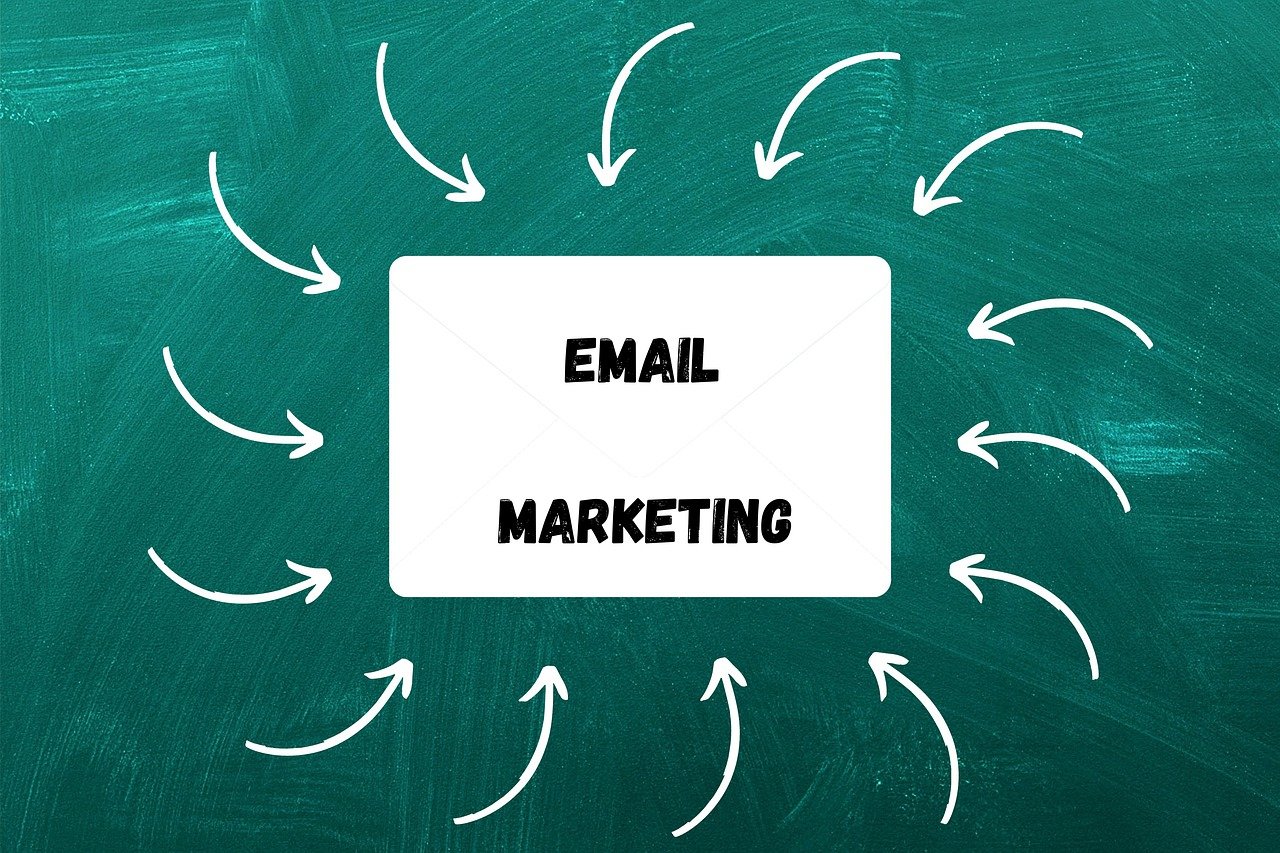The ability to send out mass emails has become crucial for businesses, marketers, and artists aiming to connect with large audiences. To enable the delivery of bulk email campaigns, these platforms provide excellent deliverability, regulatory compliance, and actionable insights via analytics. With so many options, choosing the right platform could seem like an overwhelming task. With links to reputable resources, this 1,500-word guide analyses the best bulk emailing programs of 2025, highlighting their features, pricing, and potential applications.

The Significance of Mass Emailing Programs
Companies may send thousands of emails at once with the aid of bulk emailing solutions, which are useful for newsletters, promotions, and transactional messages. Unlike regular email clients like Gmail, which limit daily sends—for example, 500 recipients daily—dedicated platforms are developed for scale, deliverability, and regulatory compliance, such as CAN-SPAM and GDPR. Key benefits include:
-
High Deliverability:
Modern methods provide good deliverability by directing emails to recipients’ inboxs rather than spam folders.
-
Automation:
Automate tasks with the use of behavioural triggers and drip marketing.
-
Personalization:
Make content more engaging by tailoring it to certain demographics.
-
Analytics:
For optimal campaign performance, monitor open, click-through, and conversion rates.
-
Cost-Effectiveness:
Several platforms offer free or low-cost options for small businesses.
Since Gmail and Yahoo have tightened restrictions for bulk senders, such as requesting authentication for over 5,000 daily emails, choosing a trustworthy platform is vital.
Prerequisites for Selecting an Appropriate Mass Emailing Service
You may evaluate Bulk Emailing Software based on these criteria:
-
Ease of Use:
Simple campaigns may be easily constructed using user-friendly interfaces and drag-and-drop editors.
-
Deliverability:
Features such as SPF, DKIM, DMARC, and IP warming ensure that emails reach inboxes, which is another aspect of deliverability.
-
Automation and Segmentation:
Triggered emails and advanced audience-targeting technologies merge segmentation with automation.
-
Compliance:
Regulatory compliance, opt-in management, and support for unsubscribe headers are all aspects of compliance.
-
Pricing:
The price range includes scalable options for large organisations and more affordable programs for smaller ones.
-
Integrations:
Integrations: Compatible with customer relationship management (CRM) software, online shopfront platforms, and additional tools.
Using these standards and information gathered from the industry, we have compiled a list of the top bulk emailing software systems for 2025.
Top Bulk Emailing Software in 2025
1. Brevo used to be Sendinblue.
Brevo is an ideal choice for startups that prioritize affordability and deliverability, just like tiny businesses do.
One of the most generous discounts because its free plan allows three hundred emails per day. Among Brevo’s distinguishing qualities are:
-
Deliverability:
Automatic SPF, DKIM, and DMarc configuration with double opt-in to reduce spam complaints
-
Automation:
Automation is defined by pre-built systems for welcome emails, abandoned carts, and re-engagement campaigns.
-
Segmentation:
Advanced filtering based on demography, behavior, or purchase history; behavior, or buy history
Advanced filtering based on demography, behavior, or purchase history; behavior, or buy history
-
Integrations:
We utilize plug-in tools for WooCommerce, Shopify, and PHP.
-
Pricing:
Pricing: Free plan; premium plans start at $9/month for 5,000 emails.
Pros:
Two advantages are strong compliance tools and a personalized free plan.
Cons:
Less personalized automation in less costly solutions.
Use Case:
Ideal for bloggers starting with email marketing or small internet stores.
2. Mailchimp
Best for:
Perfect for small to medium businesses searching for one-stop marketing requirements purchasing.
Mailchimp is a household brand with a basic UI and all-around skills in email marketing. It’s pretty strong for beginners and businesses trying to expand specifically.
-
Features:
The features include over 600 templates, a drag-and-drop editor, A/B testing, and artificial intelligence that automates recommendations.
-
Automation:
It automates drip marketing, transactional emails, and behavioral triggers.
-
Analytics:
specifics in analytics on open rates, clicks, and revenue tracking.
-
Pricing:
Free plan (500 contacts, 1,000 emails/month); premium memberships start at $13/month.
-
Integrations: Connects with Shopify, Zapier, and WordPress.
Pros:
The platform offers excellent analytics, making it user-friendly for beginners.
Cons:
One might find them expensive as contact lists grow.
Use Case:
Perfect for small businesses running newsletters or speOmniend is an ideal solution for online retailers who prioritize
3. Omnisend
Best for:
Omnisend serves as a perfect solution for online retailers who prioritize automation and personalization.
Designed especially for eCommerce, Omnisend offers online stores robust segmentation and automation. Companies like Rachel Riley raised Black Friday sales by 77% (Omnisend, 2025) by use of targeted advertising.
-
Features:
Pre-built eCommerce systems, SMS connection, and dynamic content abound.
-
Deliverability:
Email verification for dedicated IP options and top inbox placement.
-
Automation:
Automation includes post. The free plan offers 250 contacts and 500 emails per month, while the premium plans begin at $16/month.
-
Pricing:
The free plan allows for 250 contacts and 500 emails per month, while the premium plans start at $16 per month. The robust automation and e-commerce-focused free plan do not impose any feature limitations.
-
Integrations: Shopify, WooCommerce, and BigCommerce.
Pros:
The robust automation and e-commerce-focused free plan do not impose any feature limitations.
Cons:
Restricted capacity for non-online purchasers.
Use Case:
E-commerce businesses need customized, automatic promotions.
4. MailerLite
Best for:
Perfect for creatives and bloggers on a budget.
Small businesses are drawn to MailerLite’s simplicity and economy, which are ideal for content-oriented marketing; its straightforward interface and blogging-specific features are also a great match.
-
Features:
dynamic content for PHP integration, RSS campaigns, targeted mailings,
-
Ease of Use:
Ease of use comes from no-code templates and drag-and-drop editors.
-
Automation:
Easy welcome letter and subscriber nurturing procedures.
-
Pricing:
Paid memberships start at $9/month; free This platform is ideal for novices due to its affordability and simplicity.
-
Integrations:
PHP, Zapier, and e-commerce.
Pros:
Who provides a platform that is ideal for novices due to its affordability and simplicity?
Cons:
Not as much advanced au This platform is ideal for companies looking for comprehensive
Use Case:
RS or bloggers who give educational materials or newsletters.
5. GetResponse
Best for:
This platform is ideal for companies looking for comprehensive marketing solutions.
GetResponse combines mass email delivery, webinars, landing pages, and CRM technologies. Its free plan is generous—2,500 emails a month.
-
Features:
Pre-built automations, artificial intelligence-powered segmentation, and 600+ templates.
-
Automation:
Automation addresses eCommerce tracking, welcome sequences, and win-back campaigns.
-
Deliverability:
Deliverability tools for IP warming and email validation
-
Pricing:
Paid plans start at $19 a month; free plans—2,500 emails a month—start. Cons: Advanced automation requires more sophisticated schemes.
-
Integrations: Magento, Shopify, and WordPress.
Pros:
Among the advantages are comprehensive tools and reasonable cost for entrepreneurs.
Cons:
Advanced automation requires more sophisticated schemes.
Use Case:
Businesses starting various kinds of marketing utilizing webinars or landing sites.
Key Features to Look for in Best Bulk Emailing Software
Give these first importance to ensure your chosen platform meets your needs:
-
Email Builder:
Email B The system also offers automated HTML templates for drag-and-copy editors or expert designs.
-
Deliverability Tools:
Dedicated IPs, SPF, DKIM, and DMARC assist in avoiding spam folders.
-
Automation:
The system also offers automated drip marketing, behavioral triggers, and transactional email support.
-
Analytics:
Analytics opens, clicks, bounces, and unsubscribes real-time tracking.
-
List Management:
Simple imports and exports; segmentation; bouncing handling; list management.
-
Compliance:
GDPR/CAN-Spam support; opt-in management; automated unsubscribe headers.

-
Best Practices for Bulk Email Campaigns
Use these suggested practices to optimize bulk emailing tools:
-
Build an Opt-In List:
Email members who have expressly consented only. By attesting to authorization, Brevo’s double opt-in forms assist in lowering spam complaints.
-
Warm Up New IPs:
As Mailmodo suggests, increase email volume gradually to establish a positive sender reputation.
-
Personalize Content:
Dynamic content and segmentation may make emails more relevant. One way to make the receiver feel more involved is to include their name in the subject line.
-
Test Before Sending:
Check your inbox for issues, including broken links, spam, and device display. Woodpecker and other spam testing tools make it easier to get messages sent.
-
Monitor Analytics:
Regularly reviewing metrics like clicks, open rates, and bounces may greatly enhance marketing efforts. You may find successful versions using ActiveCampaign’s support for A/B testing.
-
Ensure Compliance:
Clearly marked subject lines, a physical address, and an unsubscribe button are all required by law. Stay below the 0.3% mark that Google and Yahoo have suggested for spam complaint rates.
-
Maintain List Hygiene:
Use email verification tools to get rid of spam addresses and reduce bounce rates. A prime illustration of this is BulkResponse’s list hygiene service.
Challenges and Considerations
Mass emailing systems are powerful, but they also come with certain challenges:
-
Deliverability Issues:
New domains or IPs may have trouble getting onto email lists until they establish a reputation. You may lessen the likelihood of such incidents happening by working with a reliable provider like Brevo.
-
Compliance Risks:
Failure to comply with GDPR or CAN-SPAM regulations may result in penalties. Please ensure that an opt-out option is available and that unsubscribe requests are addressed within ten days.
-
Cost Variability:
Monthly costs may range from $10 to $1,000, with the exact amount depending on features and email usage. To avoid going overboard, businesses must determine what they really need.
-
Learning Curve:
Advanced automation technologies, especially those built on platforms like ActiveCampaign, may need training.
Conclusion
These days, most marketers rely on bulk emailing technologies to help them reach large audiences with targeted, cost-effective campaigns. Businesses may boost engagement, revenue, and customer relationships via the use of analytics, segmentation, and automation, among other technologies. In 2025, the most dependable, affordable, and deliverable platforms are Brevo, ActiveCampaign, and Sender. Success, however, is dependent on adhering to best practices, maintaining compliance, and continuously refining data-driven initiatives. Regardless of whether you run a small business or a multinational conglomerate, investing in the right bulk emailing solution can lead to exceptional results in your email marketing campaigns.
Start with a platform’s free plan to test its features, then scale as your needs grow. For further insights, explore these resources:
1.Email Marketing Best Practices by Campaign Monitor
2.HubSpot’s Guide to Email Deliverability
3.Litmus Email Marketing Trends
4.Sender’s Compliance Guide
-
